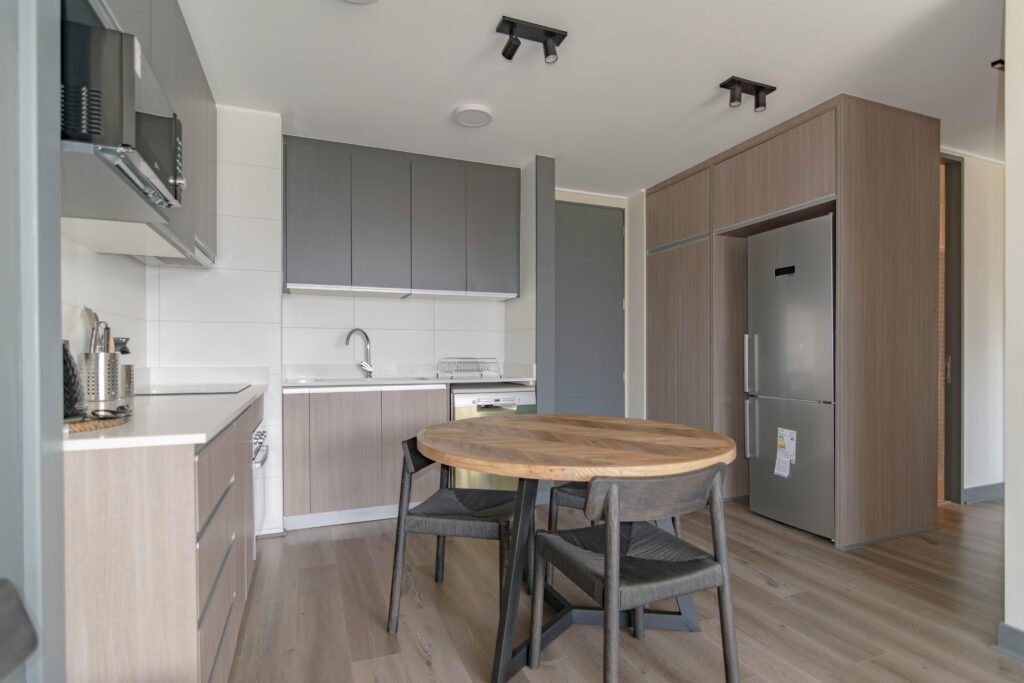Imagine walking into a home where sunlight floods every corner, space feels endless, and the boundaries between rooms simply vanish. This is the magic of open-concept living, a design trend that has transformed houses into airy, inviting sanctuaries. But what happens when the dream of open spaces clashes with the need for privacy? The idea of “open-concept living tearing down walls without losing privacy” may seem contradictory at first, but it’s entirely possible to have both.
In this article, you will discover how to embrace open-concept living without forfeiting those quiet moments you cherish. We’ll explore innovative design solutions and practical strategies to create fluid spaces that encourage connection while still providing private nooks for relaxation or work. Whether you’re remodeling, designing your dream home, or simply curious about this trend, understanding how to balance openness with privacy is key. Stay with us to unpack inspiring ideas and expert tips that turn walls into opportunities , proof that open-concept living tearing down walls without losing privacy is a design philosophy worth mastering.
Table of Contents
ToggleKey Takeaways
- Balance Openness and Privacy: Use partial dividers—like shelving, glass panels, or curtains—to maintain sightlines and connection while carving out private nooks.
- Define Zones Without Walls: Anchor areas with rugs, furniture groupings, or lighting schemes instead of full partitions.
- Control Acoustics: Incorporate soft furnishings, area rugs, and acoustic panels to absorb noise and preserve intimate atmospheres.
- Layer Lighting: Combine ambient, task, and accent lighting (with dimmers) to delineate functional zones and set moods.
- Flexible Boundaries: Employ sliding doors, folding screens, or movable furniture to adapt spaces for open gatherings or quiet retreats.
- Maximize Natural Light & Airflow: Keep sightlines clear and use window treatments or skylights to fill the space with light, then modulate privacy with translucent materials.
- Consistent Aesthetics: Unify color palettes and materials across zones to reinforce cohesion, while introducing subtle shifts (e.g., flooring changes) to signify different areas.
- Prospect & Refuge: Ensure some areas offer “prospect” (open views) and others “refuge” (cozy, sheltered spots) to satisfy psychological needs.
Why Open-Concept Living Tearing Down Walls Without Losing Privacy Is More Important Than You Think
Open-concept living has revolutionized the way we design and experience our homes. The phrase open-concept living tearing down walls without losing privacy encapsulates a modern architectural and lifestyle trend that balances spaciousness and connection with the need for personal boundaries. But what exactly does this mean, and why has it become such a significant movement in home design?
At its core, open-concept living tearing down walls without losing privacy involves removing traditional partitions to create a more fluid, airy living space while simultaneously incorporating thoughtful design elements that maintain individual privacy. Unlike conventional layouts defined by separate rooms and closed doors, open-concept spaces encourage interaction, natural light, and a sense of community within the household. However, a common concern has been the potential loss of privacy , a vital aspect for modern families living, working, and relaxing under one roof.
According to a 2023 study by the National Association of Home Builders, over 70% of new homes incorporate some form of open-concept design. Yet, more than half of homeowners express concerns about noise and lack of privacy in these layouts. This statistic highlights why open-concept living tearing down walls without losing privacy isn’t just a trendy term but a critical challenge and opportunity in home design.
Consider the story of Emily and James, a couple from Seattle who recently remodeled their 1960s bungalow. They aimed to tear down walls without losing privacy, transforming their cramped kitchen and living room into one expansive space. To address privacy, they integrated sliding glass partitions, strategically placed bookcases, and soundproofing materials. Their home now features seamless views and natural light, while Emily can work quietly in a nook separated visually and acoustically from the lively family area. This success story exemplifies how open-concept living tearing down walls without losing privacy can be achieved with smart planning and creativity.
By exploring the context and benefits of open-concept living tearing down walls without losing privacy, homeowners can embrace the best of both worlds: open, inviting spaces that nurture relationships and personal zones that provide respite. This balance is the future of residential design, making it more important than ever to understand how to integrate these principles effectively.
How to Implement Open-Concept Living: Step-by-Step Without Sacrificing Privacy
Transforming your home into an open-concept living space can dramatically improve the flow, light, and feel of your environment. However, the challenge lies in tearing down walls without losing the privacy that makes your home comfortable and functional. Here’s a detailed, step-by-step guide to help you achieve the perfect balance of openness and seclusion.
Step 1: Assess Your Space and Identify Load-Bearing Walls
Before knocking down any walls, understanding your home’s structure is key. Consult with a structural engineer or architect to determine which walls are load-bearing and which can be safely removed. Removing a load-bearing wall requires professional reinforcement solutions like beams or columns.
Tip: Use home design software or apps to sketch your current layout and mark potential walls for removal.
Step 2: Define Functional Zones with Furniture and Rugs
Without walls to delineate spaces, smart use of furniture can create cozy zones. For example:
– Place a sofa and coffee table to create a living area.
– Use an area rug to anchor the dining space.
– Add shelving units or consoles that can act as subtle dividers.
This approach maintains openness while offering distinct areas for different activities.
Step 3: Integrate Partial Dividers and Screens for Privacy
To preserve privacy without rebuilding full walls:
– Use open shelving units that allow light through while visually separating spaces.
– Incorporate sliding panels or curtains that can be drawn when needed.
– Opt for frosted glass partitions that block direct view yet maintain a sense of spaciousness.
These solutions offer flexibility and respond to your privacy needs dynamically.
Step 4: Employ Strategic Lighting to Define and Soften Spaces
Lighting plays a pivotal role in open-concept living. Layered lighting, such as recessed lights, pendant lamps, and floor lamps, can define areas without physical barriers.
– Install dimmers to adjust mood and intimacy.
– Use spotlights to highlight certain zones.
– Bring in natural light with larger windows and skylights to make spaces feel airy but still cozy.
Step 5: Incorporate Acoustic Solutions to Control Sound
In open spaces, sound travels freely, which can compromise privacy. To address this:
– Use soft materials like curtains, upholstered furniture, and area rugs to absorb sound.
– Add acoustic panels to key walls or ceilings.
– Select quieter HVAC systems and appliances.
Step 6: Plan for Storage and Clutter Control
Open-concept homes make clutter more visible, affecting both aesthetics and privacy. Maximize hidden storage by:
– Using built-in cabinetry.
– Opting for multi-functional furniture with storage compartments.
– Keeping surfaces clear and organized.
Step 7: Personalize with Plants and Decor
Plants are natural dividers that add both beauty and privacy. Tall potted plants or indoor trees can softly block sight lines. Additionally, decorating with art pieces and textiles can psychologically separate spaces, enhancing privacy.
By following this comprehensive approach to open-concept living, you can enjoy the best of both worlds: a spacious, airy home that still respects your need for privacy. Remember, the key is thoughtful design, professional input, and flexible solutions tailored to your lifestyle.
Tips for Open-Concept Living: Tearing Down Walls Without Losing Privacy
✅ Plan Zoned Areas: Use furniture or rugs to define distinct zones within the open space, creating a sense of separation without physical walls.
✅ Incorporate Sliding or Folding Doors: Install sliding or folding partitions that can be opened to create an open feel or closed to provide privacy when needed.
✅ Use Glass Partitions: Transparent or frosted glass walls maintain visual openness while offering acoustic privacy.
✅ Add Curtains or Screens: Lightweight curtains or decorative screens can be drawn or moved to create private spaces as desired.
✅ Implement Built-In Storage: Shelves or cabinets can act as partial dividers while offering functional storage and preserving openness.
✅ Strategic Furniture Placement: Position sofas, bookshelves, or desks to form natural boundaries that delineate different living or work areas.
✅ Utilize Acoustic Solutions: Incorporate rugs, soft furnishings, or acoustic panels to reduce noise transmission and improve privacy.
✅ Enhance Lighting Zones: Use different lighting fixtures or dimmers to visually separate areas and set distinct moods.
By combining these strategies, you can enjoy the airy, spacious feel of open-concept living while still maintaining the privacy everyone needs.
Concepts Key
Open-concept living is more than just a modern architectural trend; it represents a fundamental shift in how we experience space, light, and interaction within our homes. The phrase “tearing down walls without losing privacy” encapsulates a delicate balance, a paradox where openness and intimacy coexist harmoniously. To truly appreciate this concept, it’s essential to delve into the key ideas that define and shape this evolving way of living.

The Essence of Open-Concept Living
At its core, open-concept living is about removing physical barriers that traditionally separated rooms, creating a seamless flow between areas such as the kitchen, dining room, and living room. Imagine a canvas wiped clean of rigid partitions, where light cascades freely and voices travel without obstruction. This architectural openness fosters an atmosphere of connectivity, encouraging interaction and shared experiences. It’s akin to a river running unimpeded, joining tributaries to form a wider, more vibrant stream.
Yet, unlike an endless river with no banks, open-concept living must maintain a sense of order and definition. Without this, the space risks becoming chaotic or overly exposed, a challenge that leads us to the vital concept of preserving privacy within openness.
Privacy Within Openness: The Invisible Boundaries
Privacy doesn’t necessarily require solid walls or closed doors. In an open-concept design, privacy is often created through more subtle, sometimes invisible boundaries. Consider the analogy of a garden: though its vast expanse might be visible, strategic placement of shrubs, trees, and pathways creates secluded nooks and intimate corners where one can retreat. Similarly, in a home, carefully crafted spatial arrangements, furniture placement, or architectural details can subtly define zones without full enclosure.
This nuanced approach means treating privacy as an experience rather than a mere physical obstruction. It’s about managing sightlines, acoustics, and personal space to allow individuals moments of solitude, even within a communal environment. The interplay between openness and privacy becomes a dance of transparency and seclusion, blending together like light filtering through a lace curtain, soft enough to allow visibility but dense enough to obscure, maintaining a sense of personal sanctuary.
Light and Airflow: The Lifeblood of Open Spaces
Light and airflow are invisible yet powerful elements that define the feel and functionality of open-concept living. Think of sunlight pouring through expansive windows as the home’s lifeblood, filling the space with warmth, vitality, and a natural rhythm that changes with the day. Walls, when removed, allow this flow of light and air to traverse freely, reducing the division of energies and fostering a sense of unity.
However, the challenge emerges in maintaining control over these natural elements. Too much exposure can lead to discomfort or diminished privacy; too little can cause the space to feel closed in. Open-concept design becomes an exercise in capturing light and air with precision, using architectural nuances like partial walls, glass partitions, or shelving units as “filters” or “veils” to modulate their intensity and direction. Such devices act like the leaves of a tree, providing shade while still allowing dappled light to penetrate.
The Psychological Impact of Space
The human mind responds deeply to the environment it inhabits. Open-concept living influences psychological states by promoting openness, freedom, and connection, but it also requires a sense of safety and personal retreat to avoid overstimulation. Picture a bustling open-air market where the abundance of sights and sounds creates energy and engagement. Without places to pause or step aside, however, this environment can overwhelm. Similarly, a home must balance vibrancy with tranquility.
The concept of “prospect and refuge” from environmental psychology is helpful here: people need areas where they can observe (prospect) and also areas where they can hide or feel protected (refuge). Open-concept living extends the prospect enormously, giving panoramic views and interaction, but it must incorporate pockets of refuge to fulfill a fundamental human need for privacy and comfort.
Flexibility and Adaptability: Living Walls That Evolve
Another crucial concept is that of flexibility. Unlike static walls, the boundaries in open-concept living are often fluid and adaptable. It’s like having a magic curtain that can be drawn or parted, depending on the mood or occasion. This could be realized through movable partitions, sliding doors, or clever furniture placement that transforms the space dynamically.
This fluidity reflects modern life’s demands, spaces must transform from lively gathering spots during the day to quiet retreats at night. The architectural narrative here embraces change and evolution, ensuring that openness is not a fixed state but a dynamic living condition that adapts to the rhythms of its inhabitants.
The Harmony of Function and Aesthetics
Finally, open-concept living is a synthesis of function and aesthetics. The absence of walls does not imply a lack of structure; rather, it requires a heightened sensitivity to how spaces serve distinct purposes while appearing unified. It’s like a well-composed symphony where each instrument has its role but merges seamlessly into the whole.
This harmony is often achieved through consistent design elements such as cohesive color palettes, textures, and materials that visually bind the space together. At the same time, subtle shifts in flooring, ceiling height, or lighting define the functionality of different zones without resorting to physical separation.
Through these interconnected concepts, openness balanced by privacy, light and airflow as living forces, psychological needs for prospect and refuge, flexibility in spatial boundaries, and the harmonious blend of function and beauty, open-concept living redefines how we inhabit and experience our homes. It invites us to live in spaces that breathe, flow, and accommodate the complex tapestry of human interactions, while still honoring our individual need for solitude and comfort.
Frequently Asked Questions about Open-Concept Living: Tearing Down Walls Without Losing Privacy
❓ What is open-concept living?
Open-concept living is a design approach that removes walls and barriers between common areas like the kitchen, dining room, and living room to create a spacious, flowing environment. It encourages family interaction and allows natural light to spread throughout the space.
❓ How can I maintain privacy in an open-concept home?
To keep privacy while enjoying open-concept living, consider using furniture partitions, area rugs, sliding panels, or strategically placed shelving units. These elements provide subtle separation without fully closing off spaces. Additionally, installing frosted glass or glass blocks can allow light through while preserving privacy.
❓ Are there any structural considerations before tearing down walls?
Yes, it’s essential to identify which walls are load-bearing before demolition. Removing load-bearing walls requires adding appropriate support beams, often with professional assistance, to maintain your home’s structural integrity and safety.
❓ What are some benefits of open-concept living beyond aesthetics?
Besides a modern and airy feel, open-concept spaces promote better socialization, improve traffic flow, and increase natural light, which can enhance mood and energy savings. It also makes smaller homes feel larger and more versatile for different activities.
❓ Can open-concept design increase home value?
Generally, yes. Many homebuyers seek open floor plans for their contemporary style and functional benefits. However, balancing openness with privacy options can make your home more appealing to a broader audience, positively impacting resale value.
By carefully planning how to tear down walls without losing privacy, open-concept living can transform your home into a bright, flexible, and welcoming space.


